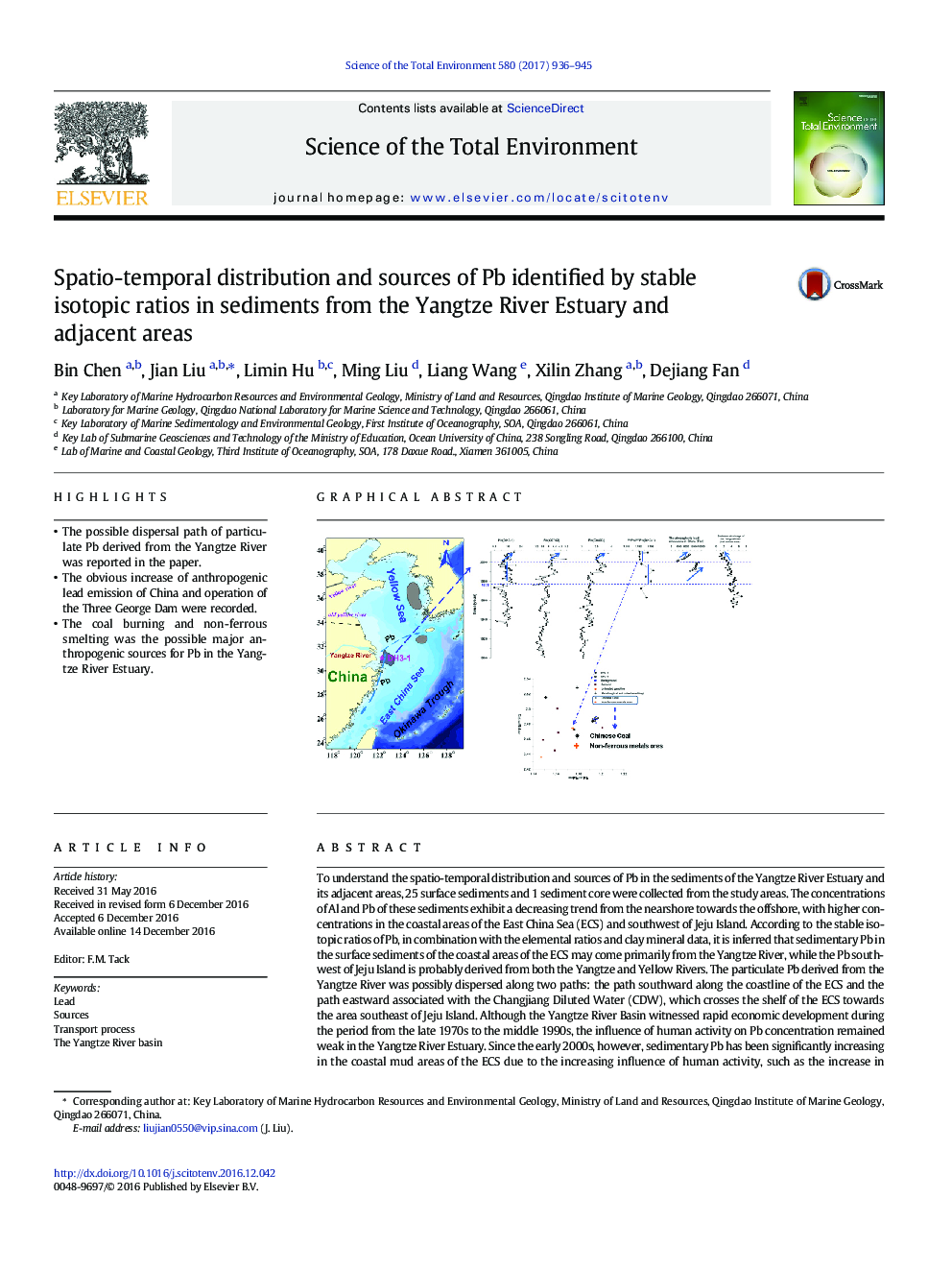| کد مقاله | کد نشریه | سال انتشار | مقاله انگلیسی | نسخه تمام متن |
|---|---|---|---|---|
| 5752131 | 1619711 | 2017 | 10 صفحه PDF | دانلود رایگان |
- The possible dispersal path of particulate Pb derived from the Yangtze River was reported in the paper.
- The obvious increase of anthropogenic lead emission of China and operation of the Three George Dam were recorded.
- The coal burning and non-ferrous smelting was the possible major anthropogenic sources for Pb in the Yangtze River Estuary.
To understand the spatio-temporal distribution and sources of Pb in the sediments of the Yangtze River Estuary and its adjacent areas, 25 surface sediments and 1 sediment core were collected from the study areas. The concentrations of Al and Pb of these sediments exhibit a decreasing trend from the nearshore towards the offshore, with higher concentrations in the coastal areas of the East China Sea (ECS) and southwest of Jeju Island. According to the stable isotopic ratios of Pb, in combination with the elemental ratios and clay mineral data, it is inferred that sedimentary Pb in the surface sediments of the coastal areas of the ECS may come primarily from the Yangtze River, while the Pb southwest of Jeju Island is probably derived from both the Yangtze and Yellow Rivers. The particulate Pb derived from the Yangtze River was possibly dispersed along two paths: the path southward along the coastline of the ECS and the path eastward associated with the Changjiang Diluted Water (CDW), which crosses the shelf of the ECS towards the area southeast of Jeju Island. Although the Yangtze River Basin witnessed rapid economic development during the period from the late 1970s to the middle 1990s, the influence of human activity on Pb concentration remained weak in the Yangtze River Estuary. Since the early 2000s, however, sedimentary Pb has been significantly increasing in the coastal mud areas of the ECS due to the increasing influence of human activity, such as the increase in atmospheric emission of anthropogenic Pb in China, construction of the Three Gorges Dam (TGD), and the construction of smaller dams in the upper reaches of the Yangtze River. Coal combustion and the smelting of non-ferrous metals are possible anthropogenic sources for the sedimentary Pb in the Yangtze River Estuary.
346
Journal: Science of The Total Environment - Volume 580, 15 February 2017, Pages 936-945
